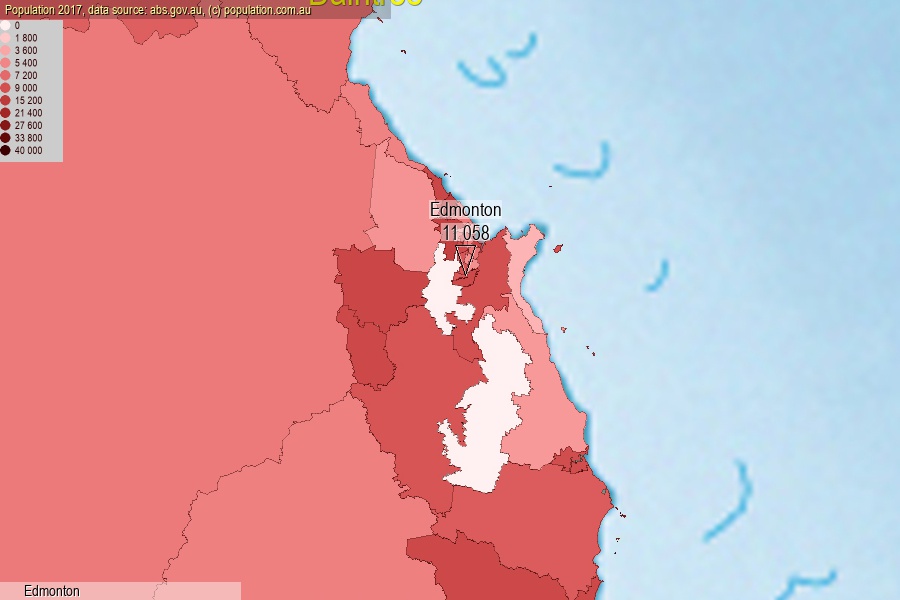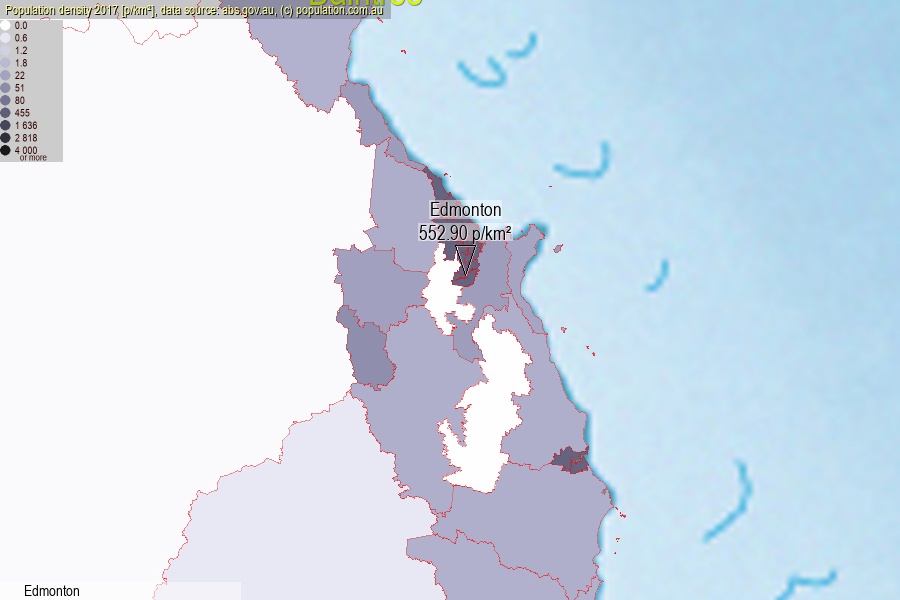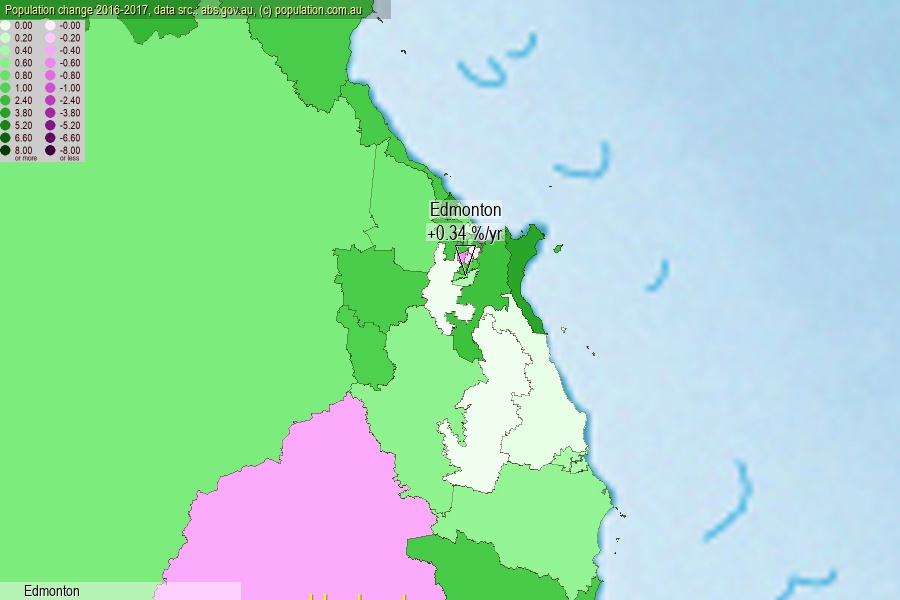 population.com.au
population.com.auLast official estimated population of Edmonton (as Statistical Area Level 2) was 11 058 people (on 2017-06-30)[2]. This was 0.04% of total Australian population and 0.222% of QLD population. Area of Edmonton is 20.00 km², in this year population density was 552.90 p/km² . If population growth rate would be same as in period 2016-2017 (+0.34%/yr), Edmonton population in 2025 would be 11 367. [0]



Click to enlarge. Edmonton is located in the center of the images.
Population [people], population density [p./km²] and population change [%/year] [2]
View borders » (new window) [4]
[1991-1992] +4.86 %/Yr.
[1992-1993] +5.52 %/Yr.
[1993-1994] +8.33 %/Yr.
[1994-1995] +15.92 %/Yr.
[1995-1996] +14.18 %/Yr.
[1996-1997] +6.51 %/Yr.
[1997-1998] +6.59 %/Yr.
[1998-1999] +3.82 %/Yr.
[1999-2000] +4.26 %/Yr.
[2000-2001] +3.80 %/Yr.
[2001-2002] +6.04 %/Yr.
[2002-2003] +4.44 %/Yr.
[2003-2004] +4.69 %/Yr.
[2004-2005] +3.46 %/Yr.
[2005-2006] +5.97 %/Yr.
[2006-2007] +6.11 %/Yr.
[2007-2008] +6.46 %/Yr.
[2008-2009] +4.72 %/Yr.
[2009-2010] +3.42 %/Yr.
[2010-2011] +1.51 %/Yr.
[2011-2012] +2.91 %/Yr.
[2012-2013] +1.77 %/Yr.
[2013-2014] +1.29 %/Yr.
[2014-2015] +0.25 %/Yr.
[2015-2016] +0.93 %/Yr.
[2016-2017] +0.34 %/Yr.
[0] Calculated with linear interpolation from officially estimated population
[1] Read more about SA2 and Australian Statistical Geography Standard (ASGS) on abs.gov.au
[2] Population data from Australian Bureau of Statistics (Population and density: 2017; change: 2016-2017)
[3] Digital Boundaries: Australian Statistical Geography Standard (ASGS) 2016.
[4] Border coordinates are simplifyed using Ramer-Douglas-Peucker algorithm.